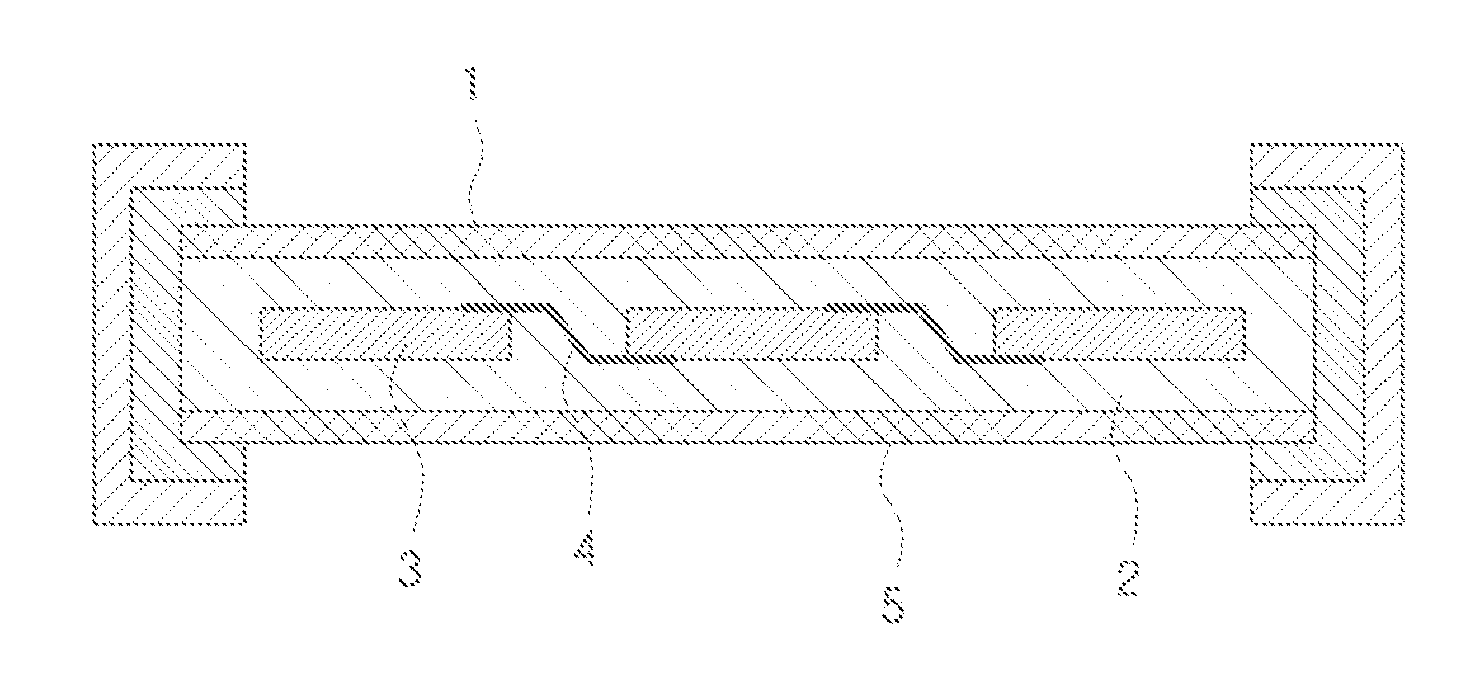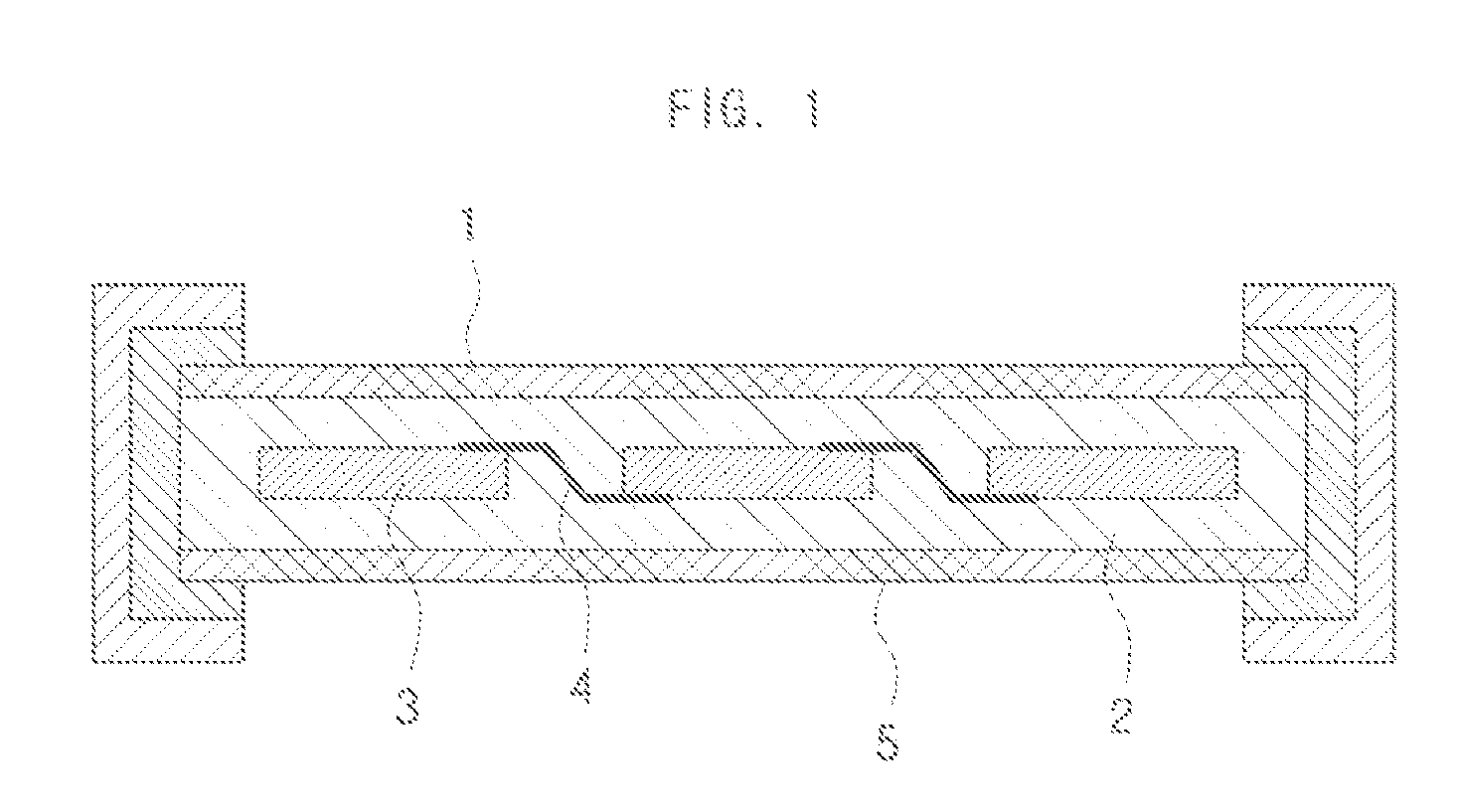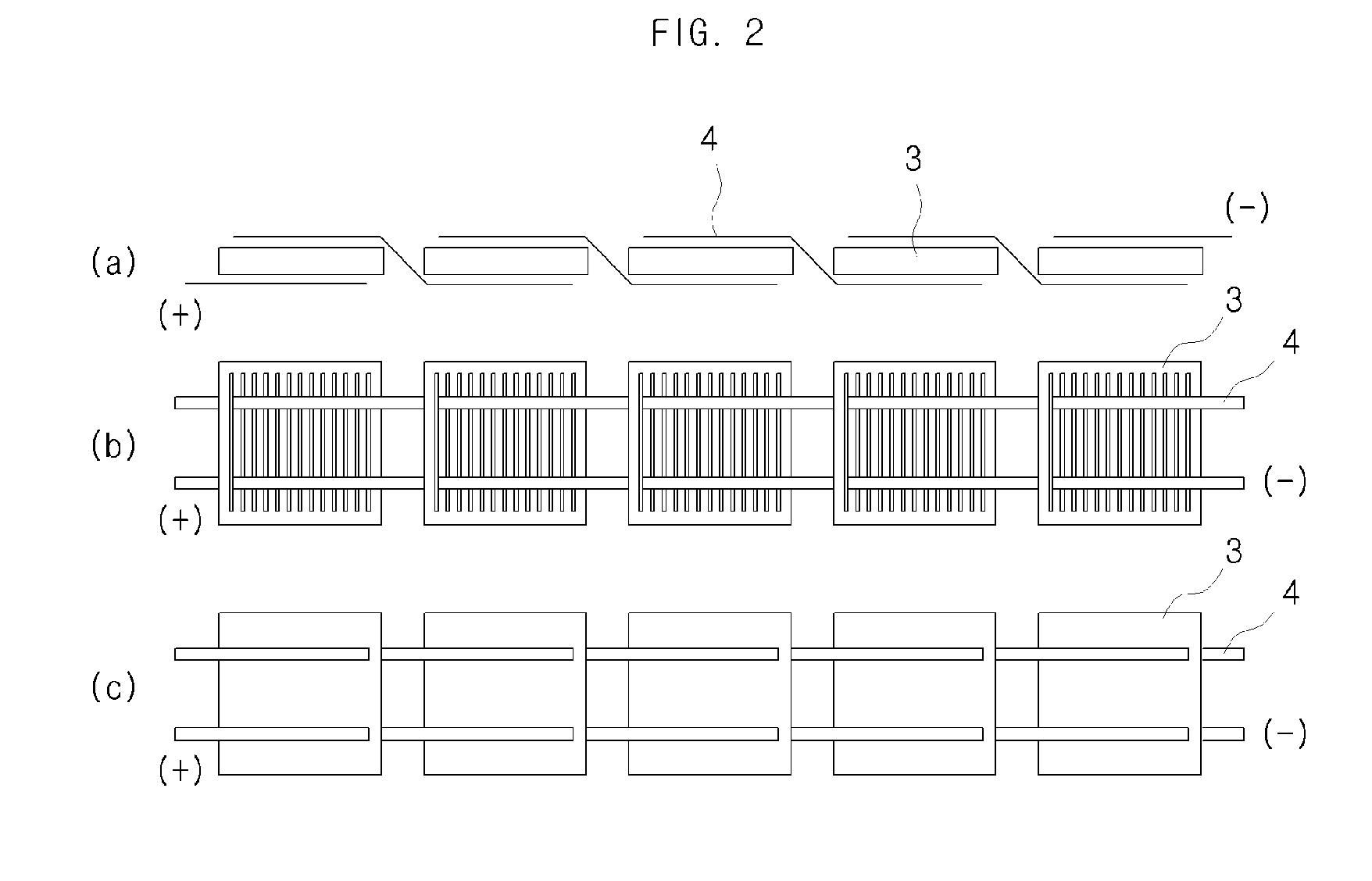Corrosion-resistant photovoltaic module
a photovoltaic module and corrosion-resistant technology, applied in the direction of basic electric elements, electrical equipment, semiconductor devices, etc., can solve the problems of reducing voltage and current, increasing degradation, and deteriorating the efficiency of the photovoltaic cell, so as to prevent corrosion, prevent corrosion, and prevent corrosion of the photovoltaic module
- Summary
- Abstract
- Description
- Claims
- Application Information
AI Technical Summary
Benefits of technology
Problems solved by technology
Method used
Image
Examples
examples 1-15
[0059]Photovoltaic cells with and without an anode for cathodic protection were tested. FIG. 5 shows a photovoltaic module without a sacrificial metal (an anode for cathodic protection) (left, Comparison Example) and a photovoltaic module with a sacrificial metal (an anode for cathodic protection) (right, Example). Each module was prepared using screen-printing process.
[0060]15 modules were prepared in each for Comparison Examples and Examples. Each module was exposed to harsher condition than the environment where a photovoltaic cell is usually exposed to cause corrosion and degradation of the properties of the photovoltaic cell electrode. Degree of corrosion and properties (efficiency, open current voltage, short current, fill factor, serial resistance) of the interconnector ribbon were determined under the condition of temperature at 45° C., 65° C. and 85° C. and relative humidity of 85%.
[0061]FIG. 6 illustrates gradual corrosion of an anode for cathodic protection over time when...
examples 16-20
[0080]15 photovoltaic cell panels with and without an anode for cathodic protection in each were prepared as in Examples 1 to 15 and then salt-sprayed. 5 wt. % of NaCl aqueous solution was used as salt water. Properties of the photovoltaic cells were determined at the temperature of 35° C. after 48, 96 and 144 hours as in Examples 1 to 15.
[0081]Average value of each property of the photovoltaic cell is summarized in the following Table 6.
TABLE 6rate ofInitialchangePropertiesvalue48 hr96 hr144 hr(%)EfficiencyExample 1613.689.525.464.10−70.06(%)Comparison13.7410.052.902.05−85.08Example 16openExample 170.5640.5560.5600.5640.03currentComparison0.5650.5630.5500.553−2.16voltageExample 17(V)shortExample 1835.0134.3428.1321.51−38.55currentComparison35.1034.4818.0011.69−66.70(mA / cm2)Example 18fill factorExample 1969.349.733.432.0−53.82(%)Comparison69.351.729.431.7−54.21Example 19serialExample 2010.323.643.359.3475.73resistanceComparison10.422.663.187.4740.38(mΩ)Example 20
[0082]Referring to T...
PUM
 Login to View More
Login to View More Abstract
Description
Claims
Application Information
 Login to View More
Login to View More - R&D
- Intellectual Property
- Life Sciences
- Materials
- Tech Scout
- Unparalleled Data Quality
- Higher Quality Content
- 60% Fewer Hallucinations
Browse by: Latest US Patents, China's latest patents, Technical Efficacy Thesaurus, Application Domain, Technology Topic, Popular Technical Reports.
© 2025 PatSnap. All rights reserved.Legal|Privacy policy|Modern Slavery Act Transparency Statement|Sitemap|About US| Contact US: help@patsnap.com



